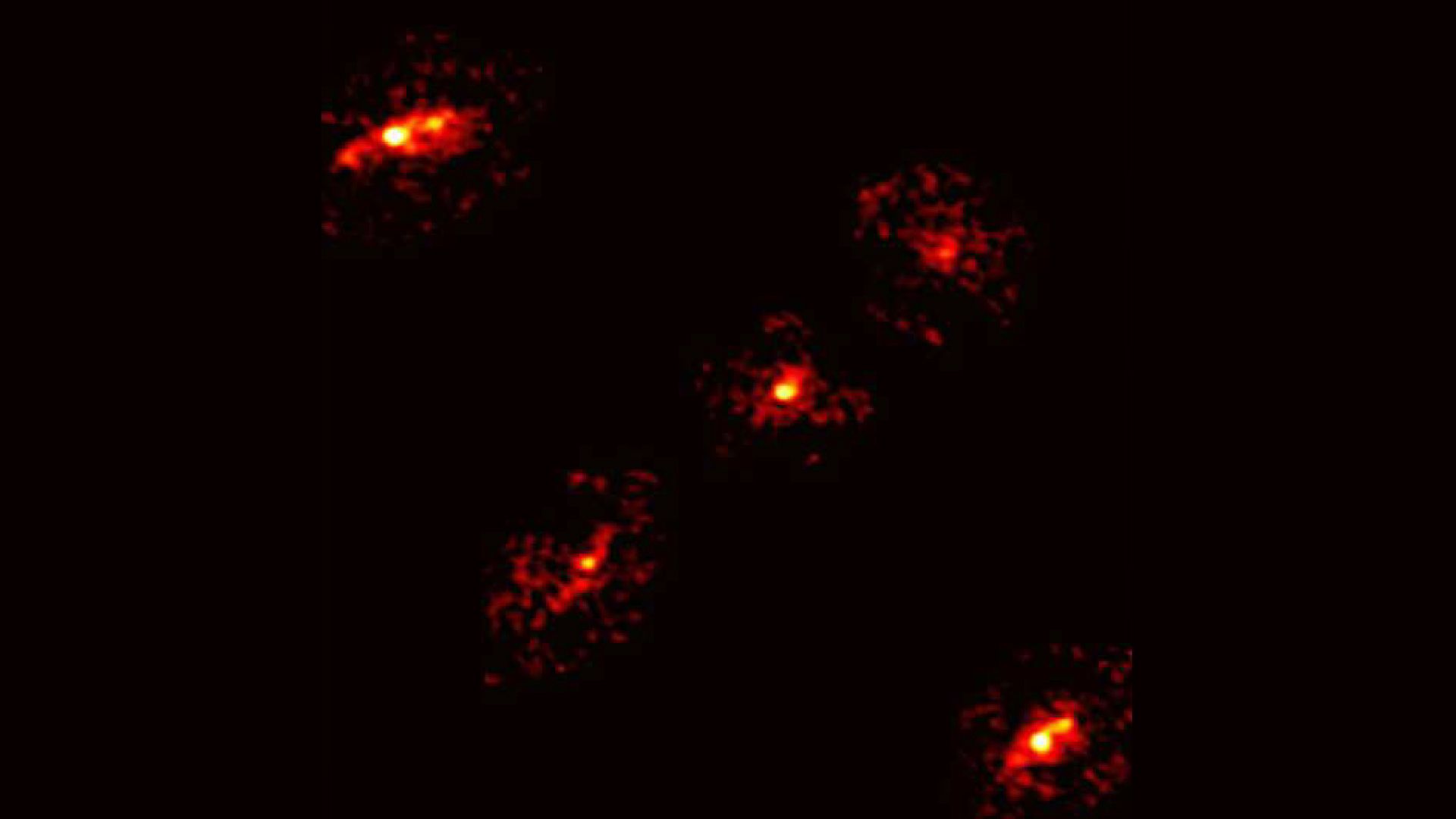🔭 At the center of this photograph, pure dark matter?
Follow us on Google News (click on ☆)
When astronomers first examined the data, they thought it was a technical error. Pierre Cox, an astronomer at the National Center for Scientific Research, expressed his astonishment at this unexpected discovery. The image showed what is called an "Einstein cross," a phenomenon where light from a distant galaxy is distorted as it passes near a massive object, typically creating four distinct images. But this time, a fifth bright spot appeared at the center, contradicting the usual theoretical predictions.

This particular 'Einstein cross' shows the light from a distant galaxy amplified and repeated five times instead of the usual four.
Credit: Nicolás Lira Turpaud (ALMA Observatory) & adapted from Cox et al. 2025
The researchers undertook a series of analyses to understand this anomaly. They used computer models to test different hypotheses. Their simulations confirmed that the five bright spots indeed came from the same galaxy, eliminating the possibility of an interfering object. After ruling out instrumental failures by comparing with data from other observatories, the team explored the hypothesis of a concentration of dark matter.
Dark matter represents one of the greatest mysteries of modern cosmology. This invisible substance does not interact with light but exerts a gravitational influence on its surroundings. In the case of this particular observation, a dense halo of dark matter could explain the formation of the fifth bright spot by deflecting light in an unusual way. This discovery opens new perspectives for directly studying the properties of this fundamental component of the Universe.
This exceptional observation allows astronomers to simultaneously study a distant galaxy and the invisible matter that distorts its light. The scientific team now hopes to use this data to refine theoretical models and better understand the distribution of dark matter in the Universe. This research could lead to significant advances in our understanding of cosmic structure and the forces governing galaxy evolution.
Dark matter: the invisible that shapes the Universe
Dark matter constitutes about 85% of the total matter in the Universe, but it remains undetectable by conventional means. Unlike ordinary matter that makes up stars, planets, and everything we see, it neither emits nor absorbs electromagnetic radiation.
Its presence is manifested only through its gravitational effects on visible objects. Astronomers first suspected its existence by observing that galaxies rotated too quickly for the amount of visible matter they contained. Without the additional gravity from dark matter, these galaxies would disintegrate under the effect of their own rotation.
Researchers believe that dark matter forms immense halos around galaxies, extending well beyond their visible limits. These invisible structures act as cosmic scaffolds on which galaxies form. Detecting these halos through indirect methods, such as gravitational lenses, therefore represents a major challenge for cosmology.
Several theoretical candidates exist to explain the nature of dark matter, ranging from supersymmetric particles to axions. Each model predicts different properties that could be tested through observations like that of the quintuple Einstein cross.
Gravitational lenses: natural telescopes
The phenomenon of gravitational lensing, predicted by Einstein's theory of general relativity, occurs when light from a distant object is deflected by the gravity of a massive object located between it and the observer. This effect works like a natural cosmic magnifying glass, amplifying and distorting the image of distant galaxies.
In the case of perfect alignment between the source, the lens, and the observer, a classic Einstein cross with four distinct images is observed. The exact configuration depends on the mass distribution of the lensing object. Galaxy clusters, with their significant concentration of dark matter, often produce spectacular lensing effects.
Astronomers use these phenomena to study objects that would otherwise be too faint or too distant to be observed directly. Gravitational lenses also allow mapping the distribution of matter, including dark matter, in the Universe. Each observed distortion reveals valuable information about the mass and structure of the lensing object.
The appearance of a fifth central image, as in the case of HerS-3, indicates a particular mass distribution that could correspond to a very concentrated dark matter halo. These rare observations offer unique opportunities to test models of cosmic structure formation.